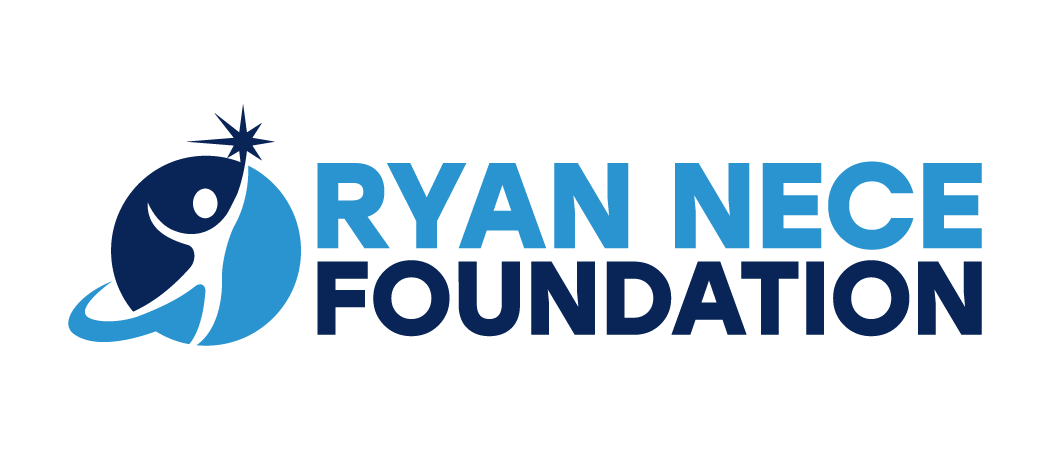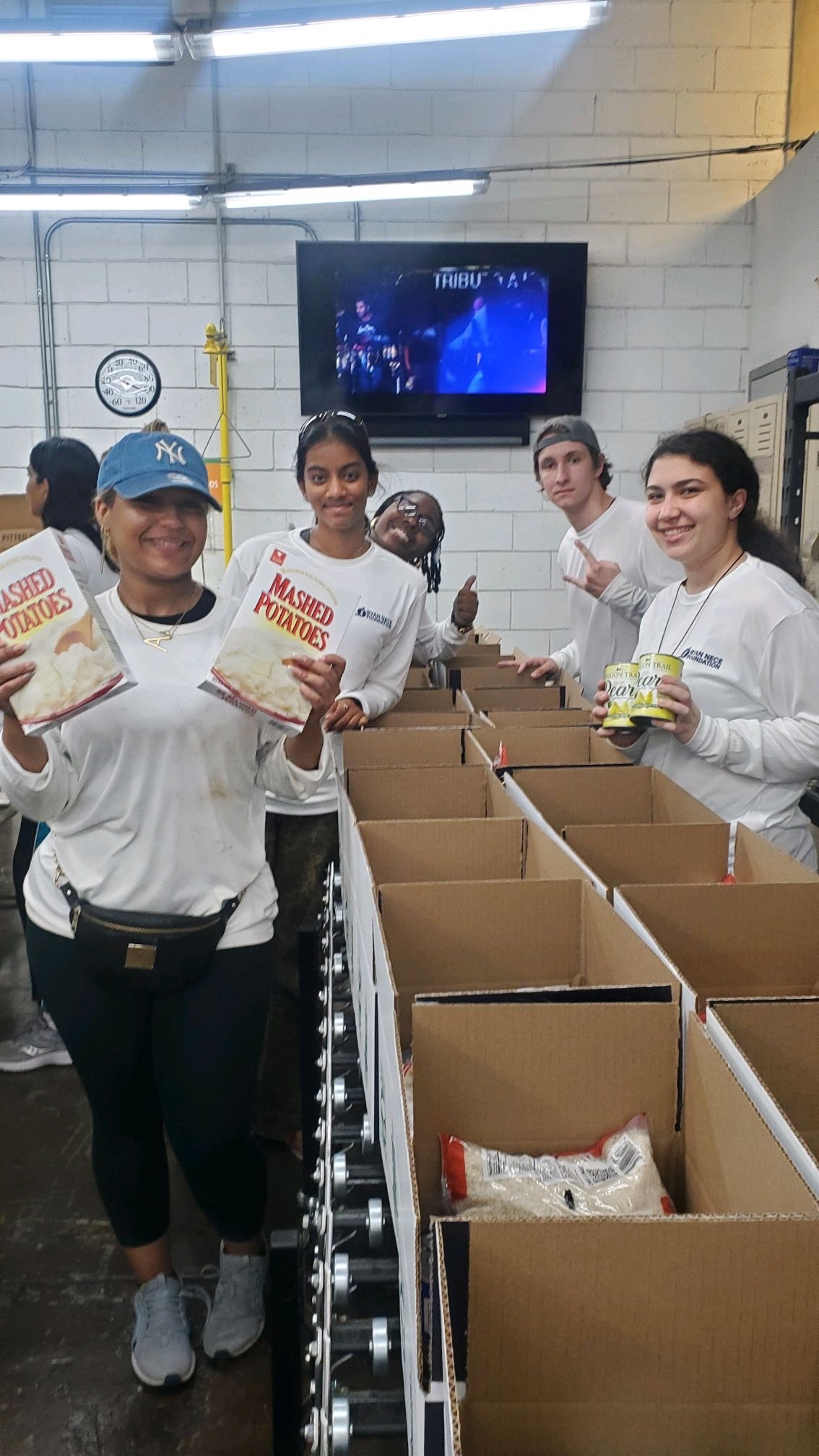You may have seen our recent blog: 4 Tips To Help Your Student Service Program Application Stand Out. We wanted to dive deeper and showcase some examples from our application process. Each of these examples were rated highly among our Selection Committee members, which is made up of members of the Ryan Nece Foundation team and Student Service Program alumni.
Please note: To follow along in the process, you can always download the Application Checklist here.
Video (weighted at 30%)
First, we wanted to show you two examples of highly rated videos from our Class of 2026 and Class of 2027 applications. The prompt says to, “Please submit a video (no longer than three minutes) about why you want to join our Student Service Program and why you believe it’s important to be service-minded.”
This is one of the most important parts of your application, but don’t feel like you have to be too flashy. Take a look at these examples. Both of these applicants were selected for our Student Service Program but submitted two completely different types of videos.
Video 1 from Nishant Shaw
Video 2 from Juliette Selman
Two Short Answer (weighted at 10% each)
Next, we wanted to show you an example of highly rated short answer responses from previous applications pr Both of these short answer prompts are limited to 250 words each.
Question 1: How do you plan to balance your time on the Student Service Program with your academics, relationships, work, and other extra-curricular activities?
Example response from Mariana Carballo: I am absolutely obsessed with planners. I have a plethora of journals and planners that have been dedicated to time management. I plan to truly put them to use to make the best of my time not only for myself to ensure I’m living in the moment but in the Student Service program. I promise I’m not a TikTok “doomscroller”, but I follow the trend of Sunday Resets. Sunday Resets are like a chill day dedicated to planning for the week. If I were in the Student Service Program, it would be no different. I note all upcoming due dates and tests for my classes, I write down my rehearsals for theatre, and how many TedX translations I should do a week depending on how busy I am; all of what I need in a Hello Kitty Planner or an aesthetic template on Notion. I feel like preplanning everything at the beginning of the week will not allow for the ability to feel overwhelmed to dwell. It is an inevitable feeling but there are always in which to prevent that.
Question 2: What does the phrase “Power of Giving” mean to you?
Example Response from Jack Montgomery: The Power of Giving is something that speaks volumes to me. My mom-a local schoolteacher-has instilled the value of giving back to our community since I was very young. As of writing this, I just woke up after volunteering for her school’s yearly fundraiser. It was a lot of fun and next year I will be coming back and bringing my club as well.
One Essay (weighted at 20%)
We also wanted to show you two examples of highly rated essay responses from our some of our current Student Service Program members, which asked our applicants to answer this prompt:
Many great leaders are determined and committed to their causes. Write about something you feel passionately about and then explain how you could lead others to also care about your cause.
This section of the application process is limited to 1,000 words.
Example 1 from Yash Modi:
Do you remember the first time you saw something that just brought immense joy to you for no understandable reason? Although I don’t remember it, my mother has told me that was what I experienced the first time I saw a dog. I know many people do not feel this joy, some may feel fear or annoyance towards them, however, I look at them as companions, best friends, support, and aides to humans. I know currently that my major is undecided but what I do know is that dogs are important to humans in need for them.
Did you know that over 6 million companion animals end up in shelters nationwide each year and that half of that amount are dogs? Did you also know that out of over 900,000 of these companions, 400,000 of them are dogs that are euthanized for numerous reasons? I have volunteered numerous times at the shelter and even just have gone to spend time with the dogs I have grown close to and read to them just so that they do not feel alone while waiting to be adopted. It is my goal to come up with an organization that would obtain these dogs from shelters and redirect them to be of use to society by utilizing what they are trained for to serve those in need in our community. As much as I adore these furry pets, it pains me to see the sadness in so many who end up in shelters for reasons such as inflation, space, breed restrictions or even strays. Many families only want shop for the young and fun puppies, while the older ones are looked past and forgotten without a thought. Dogs are in shelters attempting to find their forever homes and the time that they are just waiting, watching numerous individuals come and go, they could instead be getting trained on a certain skill. People that have medical conditions such as hearing loss, PTSD, seizures or even diabetes, could be of use of a trained dog specifically for that condition and at a lesser cost or free. Dogs not only get another chance at life, but a life with purpose.
If I can find individuals who are trained to train dogs properly and encourage them to volunteer their time to assist with dogs that are surrendered, then it can be a successful process and eliminate the quantity of dogs who are sadly euthanized due to no one wanting them or space. After training is complete, they can be donated to someone in need of them free of charge. This process not only gives the dog another chance at life, but it teaches them something new and possibly lifesaving to someone like you or I that may be in need one day. Dogs are referred to as “Man’s best friend”, but what if they could be more if we just tried to use all available resources to make it happen?
Example 2 from Eleanor Koh:
ne cause I am deeply passionate about is mental health awareness. Mental health is an issue that can affect people from all walks of life, but it still remains one of the most stigmatized topics around the world. As someone who has witnessed the impact of mental health challenges on friends and family, I feel that it’s essential to reduce stigma around the subject of mental health.
Mental health struggles are extremely isolating because they are invisible, yet can be just as debilitating. The consequences of mental health problems can be severe, affecting not just individuals, but their families, friendships, and communities. Despite the growing awareness of mental health, stigma remains a powerful force preventing many from reaching out for health.
As a passionate mental health advocate, I believe it is crucial to promote transparency and openness about mental illness and encourage a culture where mental health is treated with the same level of importance. I want to help create a world where those who suffer feel understood, supported, and empowered to seek help without fear of judgement or rejection. I am committed to using my voice to raise awareness and break down the barriers that prevent many from seeking the help they deserve.
To lead others to care about mental health, the biggest thing we can do is break down the stigma surrounding mental illness and educate others to raise awareness. As a high school student, I believe the biggest demographic subject to mental health problems are teens and youth like myself. As a servant leader, I would approach this issue with empathy and show that mental health challenges are not something to be ashamed of. Connecting with the audience and sharing personal stories can help to normalize the experience and make people feel like they are never alone. By displaying vulnerability, others will be encouraged to open up and seek support when they need it.
In order to educate others, I would focus on providing information to students about signs and symptoms of common mental health conditions. Many people don’t realize that just because mental health conditions are invisible, they are treatable and that seeking help is a sign of strength, rather than weakness. I would organize workshops and community talks in common places such as schools or recreation centers, where mental health professionals can answer questions, provide guidance, and help educate the community on how they can support others.
In addition, one of the biggest things we can do is show empathy and understanding. By promoting simple acts of kindness, active listening, and patience, we can work towards fostering an environment of empathy and understanding. Whether it’s a school, workplace, or community center, I truly believe everyone should have access to mental health resources and support. It’s also important to remember that each person’s mental health situation are unique, and each person may need different types of support at different times. Together, by leading others to care, we can create communities where mental health is prioritized, and everyone has the chance to thrive.
Finally, I believe that starting conversations with younger generations is key. Schools and universities should prioritize mental health education and offer resources for students to learn about self-care and coping strategies. As a leader, I would advocate for school programs that teach students about mental health from a young age. This would not only help reduce stigma but also equip children and teenagers with the tools they need to manage their own mental health and support their peers.
In conclusion, mental health is an issue that requires the collective effort of individuals, communities, and organizations. As a leader, my goal would be to create a supportive environment where mental health is treated with the same respect as physical health. Through empathy, education, and creating spaces for open conversations, I believe we can break the stigma and make a positive impact on the mental well-being of those around us. By leading others to care about mental health, we can help create a world where everyone feels empowered to take care of their minds just as they would their bodies.
Letters of Recommendation (upload three from this list) (weight at 10% each)
Lastly, we wanted to show you an example of each type of Letter of Recommendation you can submit. There are five different options. However, you can and should only upload three letters. We suggest carefully choosing three recommenders from the five different options. All of these letter examples were submitted from previous selected applicants
Example 1: Letter of recommendation from a nonprofit or community service organization (church, scouts, service club, etc.) representative with whom you have completed volunteer work.
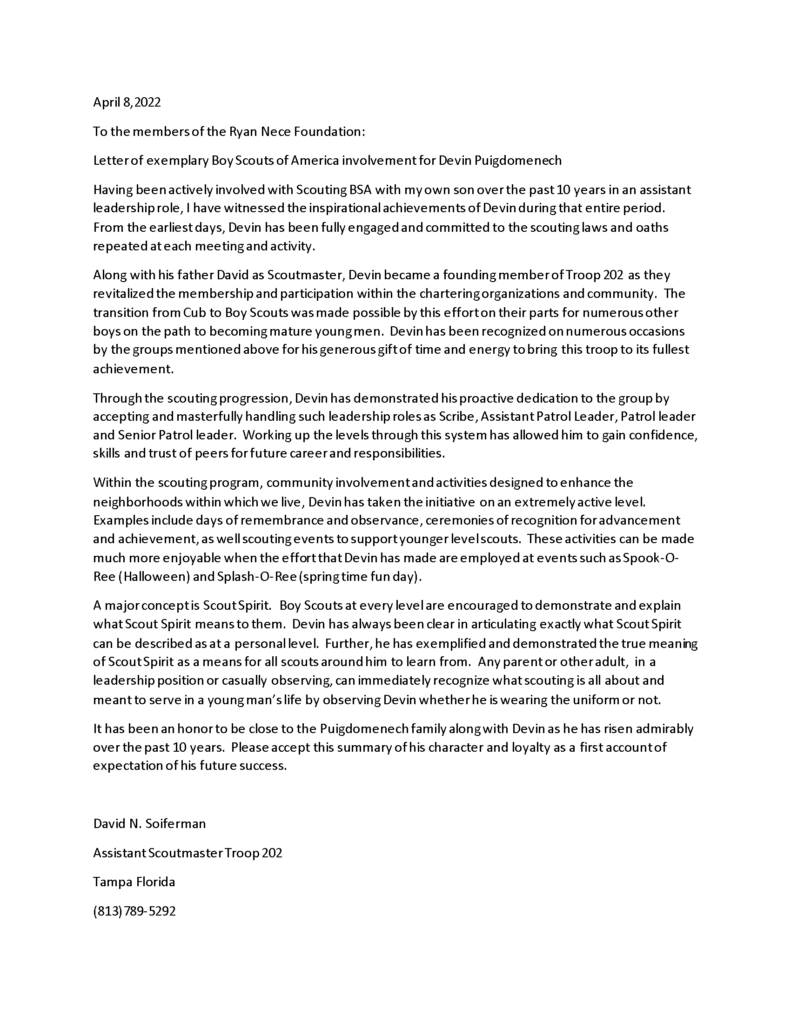
Example 2: Letter of recommendation from a teacher or school administrator.
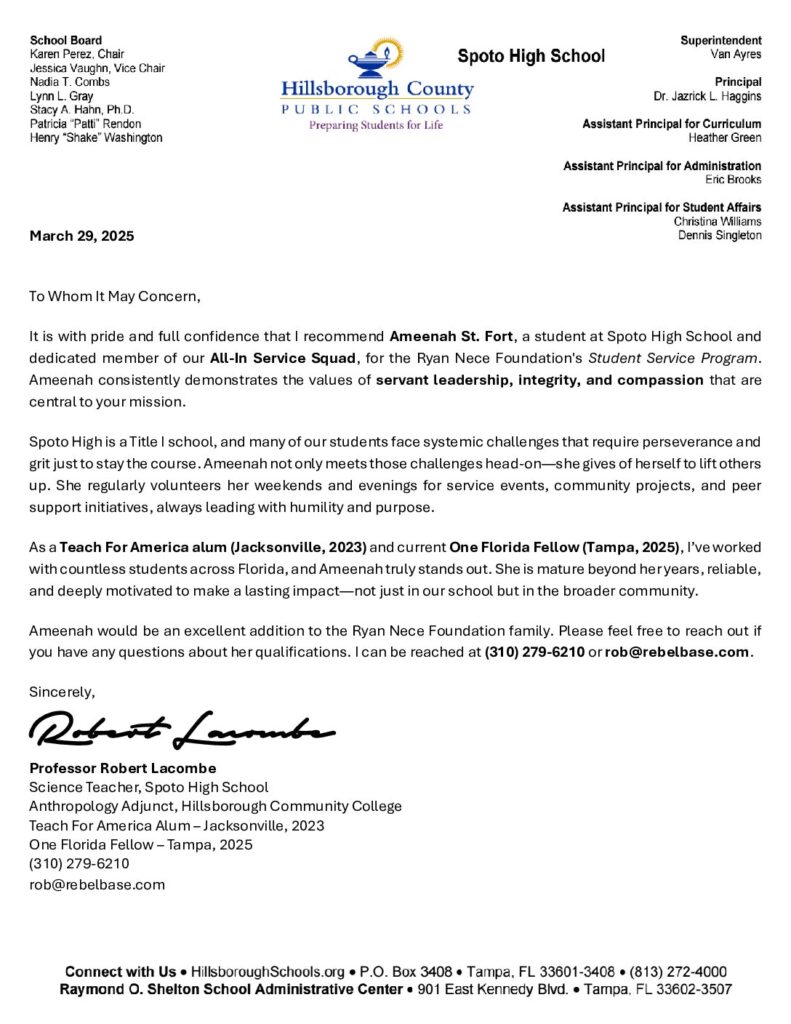
Example 3: Letter of recommendation from a person in your network who can speak to your potential success in our Student Service Program.
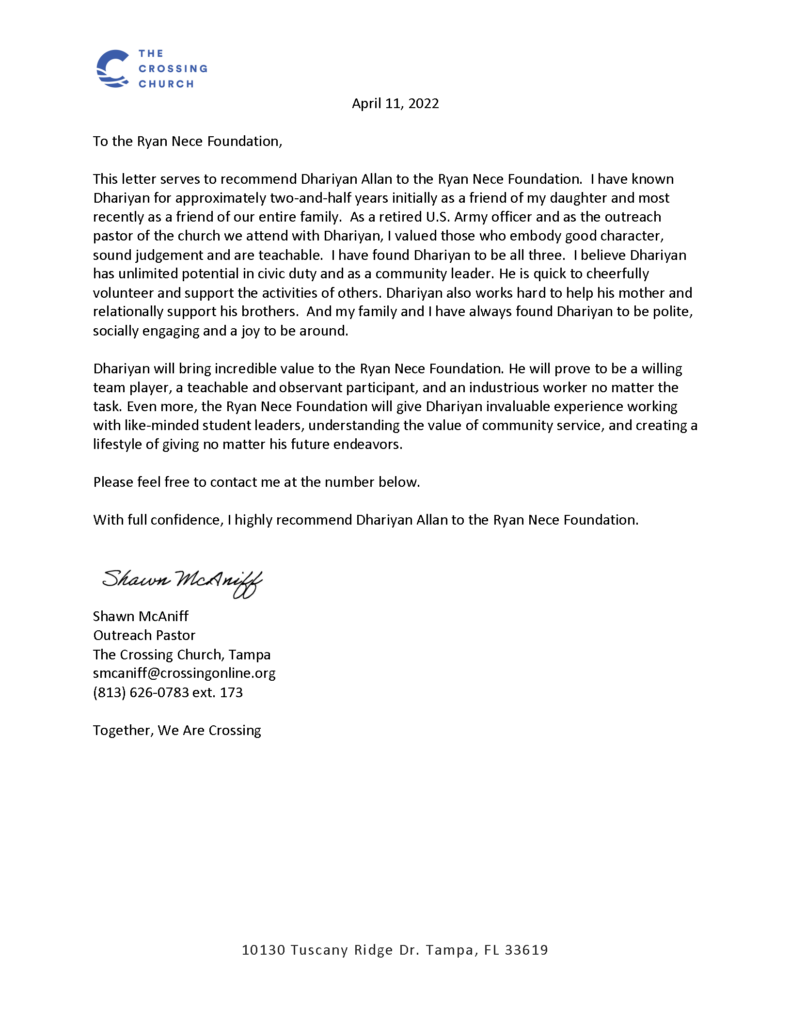
Example 4: Letter of recommendation from a person in your network who can speak to your time management skills.
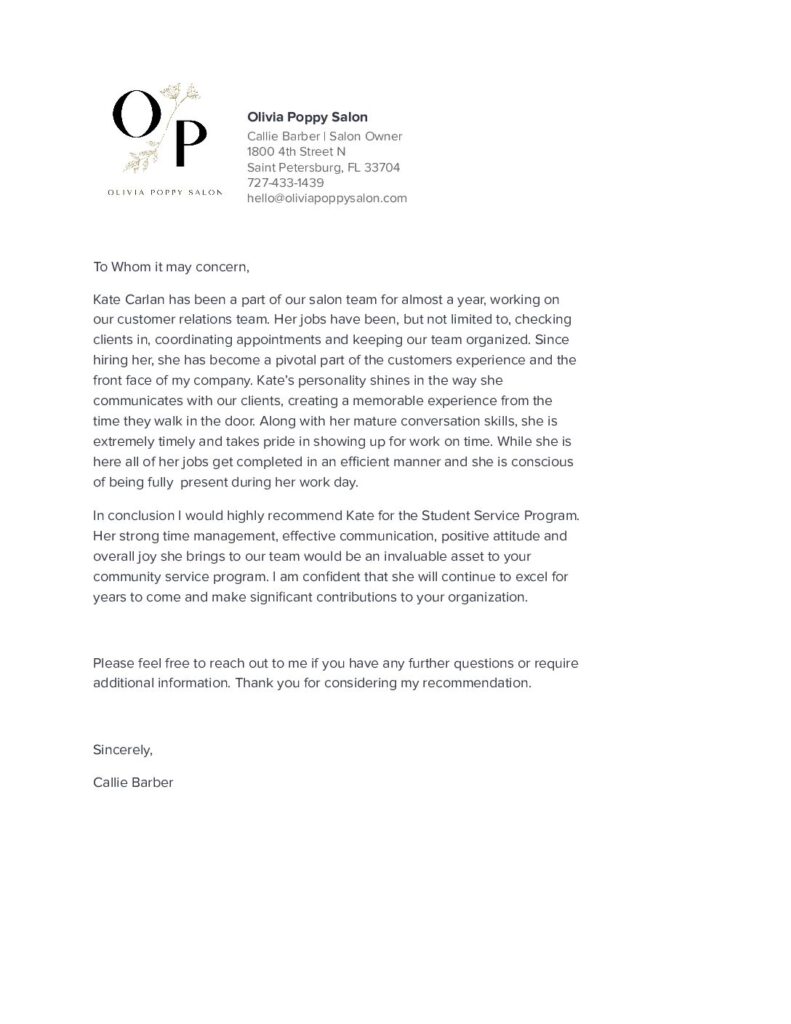
Example 5: Letter of recommendation from a person in your network who can speak to your passion for or interest in community betterment.
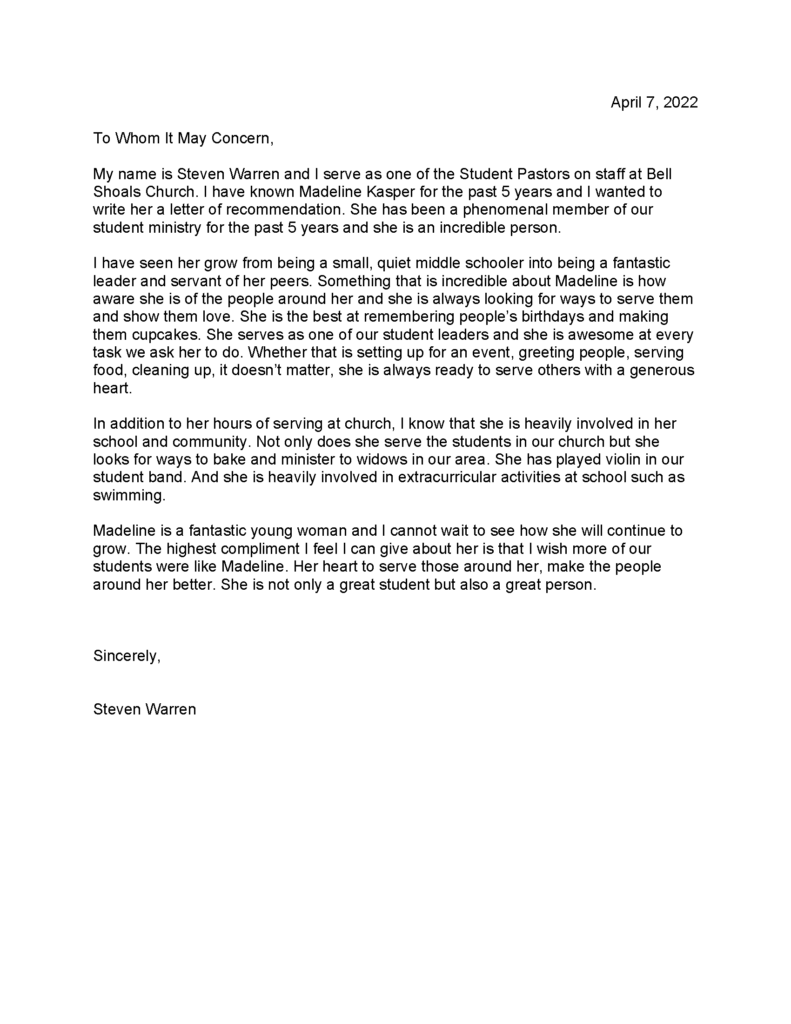
Apply Now
We hope that in sharing these examples you feel more equipped to tackle the application process. Remember, the deadline for application submission is Friday, March 27, 2026 at 11:59 p.m. Click here to apply now!
